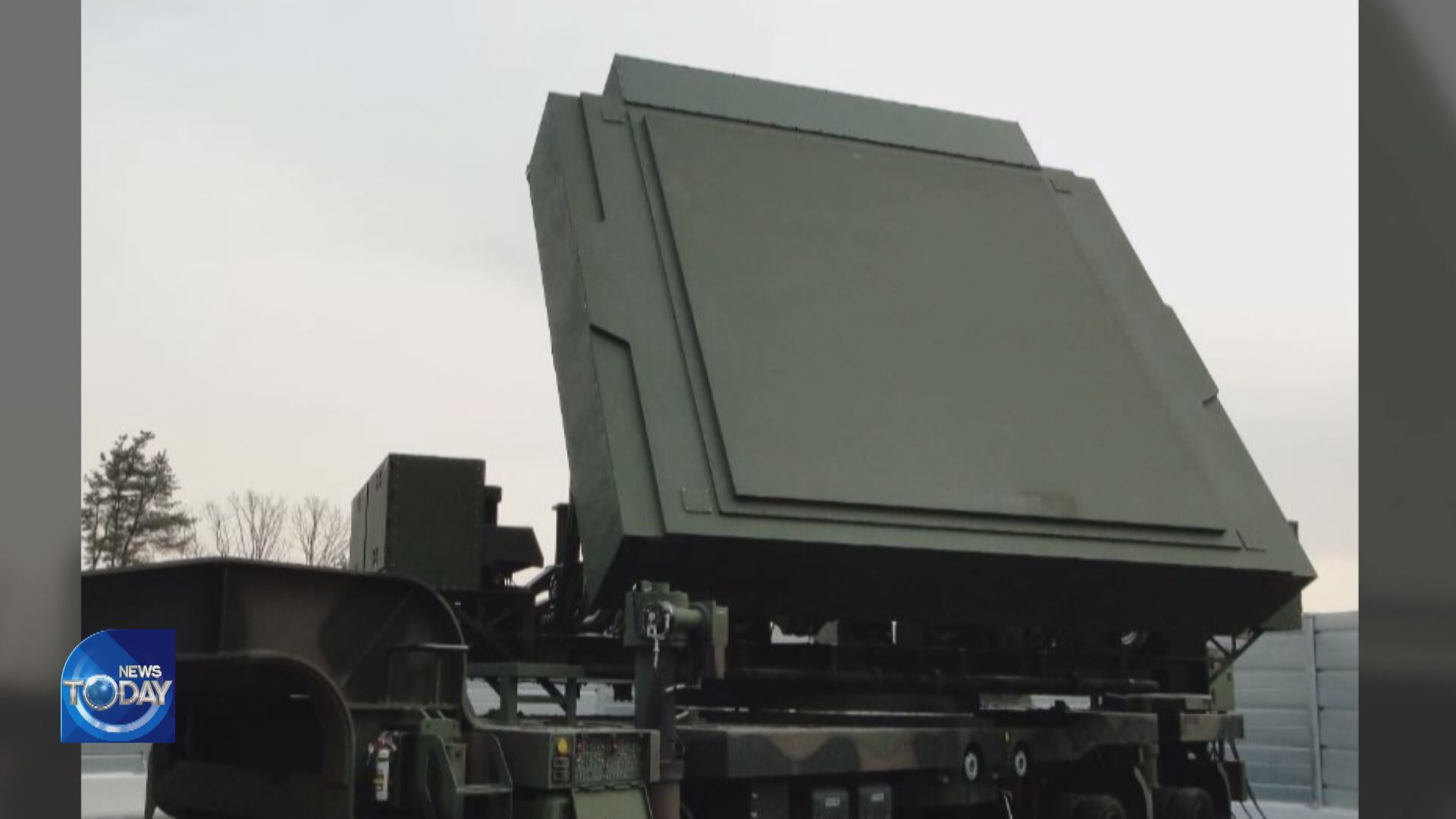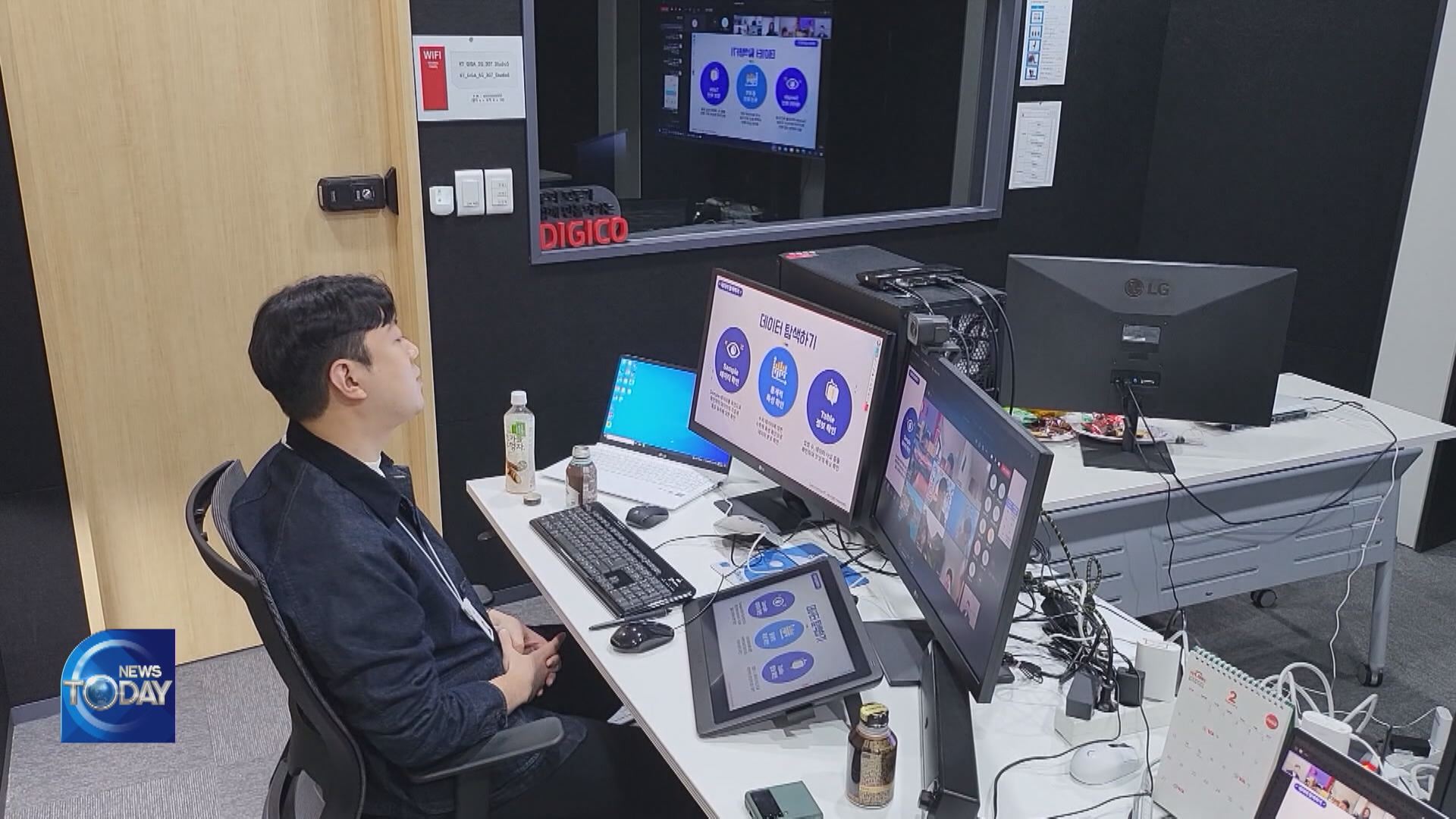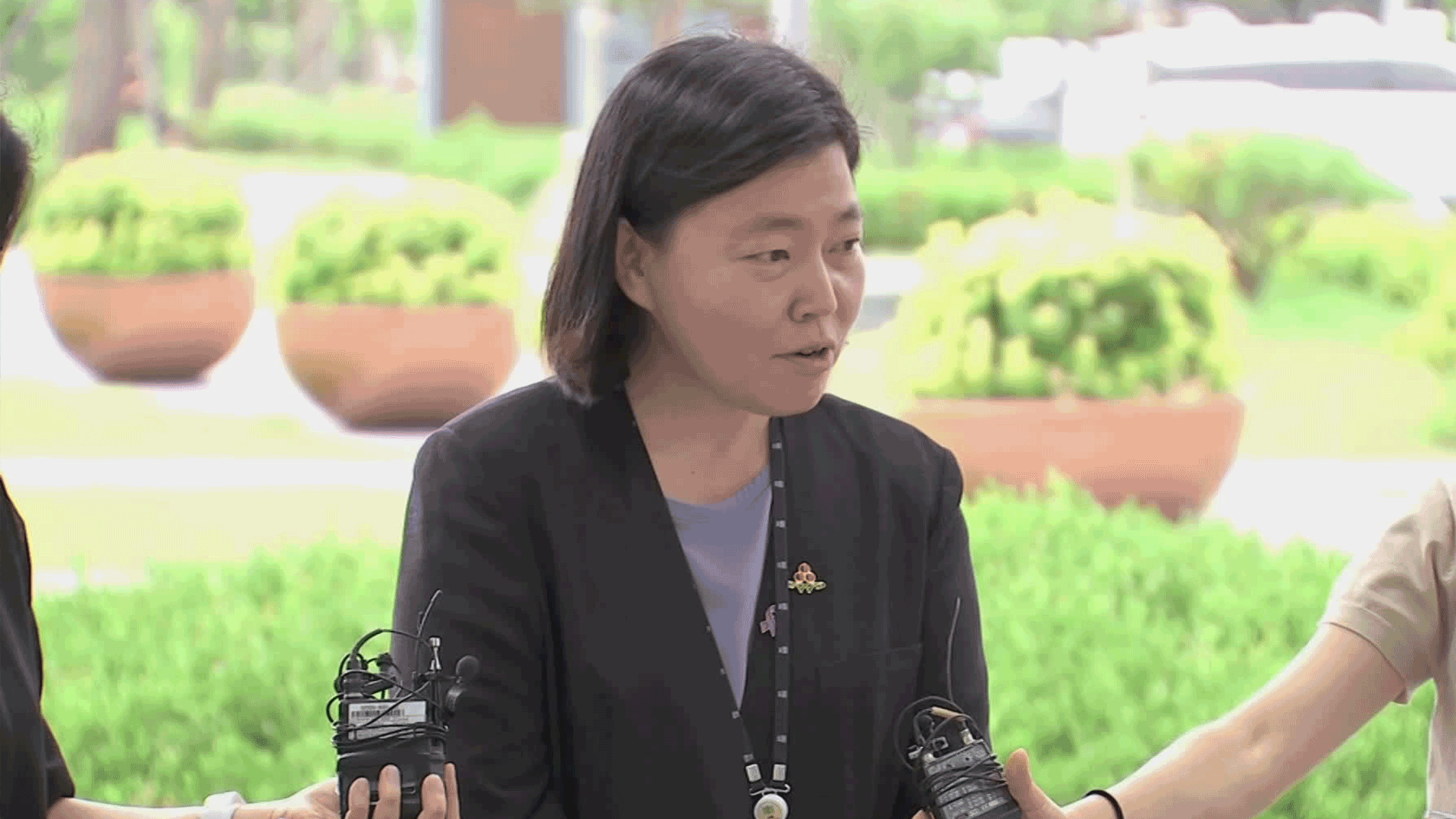S. KOREA'S AESA RADAR TECHNOLOGY
입력 2022.04.11 (15:15)
수정 2022.04.11 (16:45)
읽어주기 기능은 크롬기반의
브라우저에서만 사용하실 수 있습니다.
[Anchor Lead]
With North Korea having conducted a series of missile launches recently, South Korea is making rapid progress in developing a cutting-edge radar system that detect missiles with precision. Its project to develop a long-range missile interception system is also gaining speed. The government expects the nation will become a defense technology power house in five years.
[Pkg]
KF-21, a next-generation home-grown fighter jet that's now under development. It will be equipped with AESA or active electronically scanned array radar. Thanks to some 1,000 small transmitters installed, the radar can detect and track targets in all directions without rotating 360 degrees. In 2020, South Korea became the world’s 12th nation to develop the highly advanced AESA radars and is now working to mount them on the KF-21.
[Soundbite] Hong Yoon-seok(Defense Company Official) : "We will install a radome in the fighter jet nose cone and assess its performance in a ground test."
Multi-function radar of the long-range surface-to-air interception system: L-SAM. In addition to improved capability to identify targets, its detection and tracking distance is over four times longer than that of the mid-range surface-to-air missile Cheongung-II. After successfully test-firing the missile in February, South Korea plans to test its performance in intercepting ballistic missiles by next year and complete its development in 2024. The nation is also working to develop a multi-function radar system that will be mounted on Ulsan-class next-gen escort vessels. All of these are being developed with domestic technology. South Korea is also eyeing overseas markets to export these technologies. In January, the country clinched a four-trillion-won contract with the UAE to ship the Cheongung-II weapons system. As part of the deal, South Korea is now mass-producing a modified version of the multi-function radar. In 2019, the nation already produced 85 percent of guided weapons systems with its own technology. The government plans to further boost the nation’s technological independence and help it join the ranks of defense technology powerhouses within five years.
With North Korea having conducted a series of missile launches recently, South Korea is making rapid progress in developing a cutting-edge radar system that detect missiles with precision. Its project to develop a long-range missile interception system is also gaining speed. The government expects the nation will become a defense technology power house in five years.
[Pkg]
KF-21, a next-generation home-grown fighter jet that's now under development. It will be equipped with AESA or active electronically scanned array radar. Thanks to some 1,000 small transmitters installed, the radar can detect and track targets in all directions without rotating 360 degrees. In 2020, South Korea became the world’s 12th nation to develop the highly advanced AESA radars and is now working to mount them on the KF-21.
[Soundbite] Hong Yoon-seok(Defense Company Official) : "We will install a radome in the fighter jet nose cone and assess its performance in a ground test."
Multi-function radar of the long-range surface-to-air interception system: L-SAM. In addition to improved capability to identify targets, its detection and tracking distance is over four times longer than that of the mid-range surface-to-air missile Cheongung-II. After successfully test-firing the missile in February, South Korea plans to test its performance in intercepting ballistic missiles by next year and complete its development in 2024. The nation is also working to develop a multi-function radar system that will be mounted on Ulsan-class next-gen escort vessels. All of these are being developed with domestic technology. South Korea is also eyeing overseas markets to export these technologies. In January, the country clinched a four-trillion-won contract with the UAE to ship the Cheongung-II weapons system. As part of the deal, South Korea is now mass-producing a modified version of the multi-function radar. In 2019, the nation already produced 85 percent of guided weapons systems with its own technology. The government plans to further boost the nation’s technological independence and help it join the ranks of defense technology powerhouses within five years.
■ 제보하기
▷ 카카오톡 : 'KBS제보' 검색, 채널 추가
▷ 전화 : 02-781-1234, 4444
▷ 이메일 : kbs1234@kbs.co.kr
▷ 유튜브, 네이버, 카카오에서도 KBS뉴스를 구독해주세요!
- S. KOREA'S AESA RADAR TECHNOLOGY
-
- 입력 2022-04-11 15:15:24
- 수정2022-04-11 16:45:06

[Anchor Lead]
With North Korea having conducted a series of missile launches recently, South Korea is making rapid progress in developing a cutting-edge radar system that detect missiles with precision. Its project to develop a long-range missile interception system is also gaining speed. The government expects the nation will become a defense technology power house in five years.
[Pkg]
KF-21, a next-generation home-grown fighter jet that's now under development. It will be equipped with AESA or active electronically scanned array radar. Thanks to some 1,000 small transmitters installed, the radar can detect and track targets in all directions without rotating 360 degrees. In 2020, South Korea became the world’s 12th nation to develop the highly advanced AESA radars and is now working to mount them on the KF-21.
[Soundbite] Hong Yoon-seok(Defense Company Official) : "We will install a radome in the fighter jet nose cone and assess its performance in a ground test."
Multi-function radar of the long-range surface-to-air interception system: L-SAM. In addition to improved capability to identify targets, its detection and tracking distance is over four times longer than that of the mid-range surface-to-air missile Cheongung-II. After successfully test-firing the missile in February, South Korea plans to test its performance in intercepting ballistic missiles by next year and complete its development in 2024. The nation is also working to develop a multi-function radar system that will be mounted on Ulsan-class next-gen escort vessels. All of these are being developed with domestic technology. South Korea is also eyeing overseas markets to export these technologies. In January, the country clinched a four-trillion-won contract with the UAE to ship the Cheongung-II weapons system. As part of the deal, South Korea is now mass-producing a modified version of the multi-function radar. In 2019, the nation already produced 85 percent of guided weapons systems with its own technology. The government plans to further boost the nation’s technological independence and help it join the ranks of defense technology powerhouses within five years.
With North Korea having conducted a series of missile launches recently, South Korea is making rapid progress in developing a cutting-edge radar system that detect missiles with precision. Its project to develop a long-range missile interception system is also gaining speed. The government expects the nation will become a defense technology power house in five years.
[Pkg]
KF-21, a next-generation home-grown fighter jet that's now under development. It will be equipped with AESA or active electronically scanned array radar. Thanks to some 1,000 small transmitters installed, the radar can detect and track targets in all directions without rotating 360 degrees. In 2020, South Korea became the world’s 12th nation to develop the highly advanced AESA radars and is now working to mount them on the KF-21.
[Soundbite] Hong Yoon-seok(Defense Company Official) : "We will install a radome in the fighter jet nose cone and assess its performance in a ground test."
Multi-function radar of the long-range surface-to-air interception system: L-SAM. In addition to improved capability to identify targets, its detection and tracking distance is over four times longer than that of the mid-range surface-to-air missile Cheongung-II. After successfully test-firing the missile in February, South Korea plans to test its performance in intercepting ballistic missiles by next year and complete its development in 2024. The nation is also working to develop a multi-function radar system that will be mounted on Ulsan-class next-gen escort vessels. All of these are being developed with domestic technology. South Korea is also eyeing overseas markets to export these technologies. In January, the country clinched a four-trillion-won contract with the UAE to ship the Cheongung-II weapons system. As part of the deal, South Korea is now mass-producing a modified version of the multi-function radar. In 2019, the nation already produced 85 percent of guided weapons systems with its own technology. The government plans to further boost the nation’s technological independence and help it join the ranks of defense technology powerhouses within five years.
이 기사가 좋으셨다면
-
좋아요
0
-
응원해요
0
-
후속 원해요
0












![[속보] 2차 추경안 본회의 상정…우 의장 “민생 챙기는 일 늦출 수 없어”](/data/layer/904/2025/07/20250704_TpViPe.jpg)




이 기사에 대한 의견을 남겨주세요.